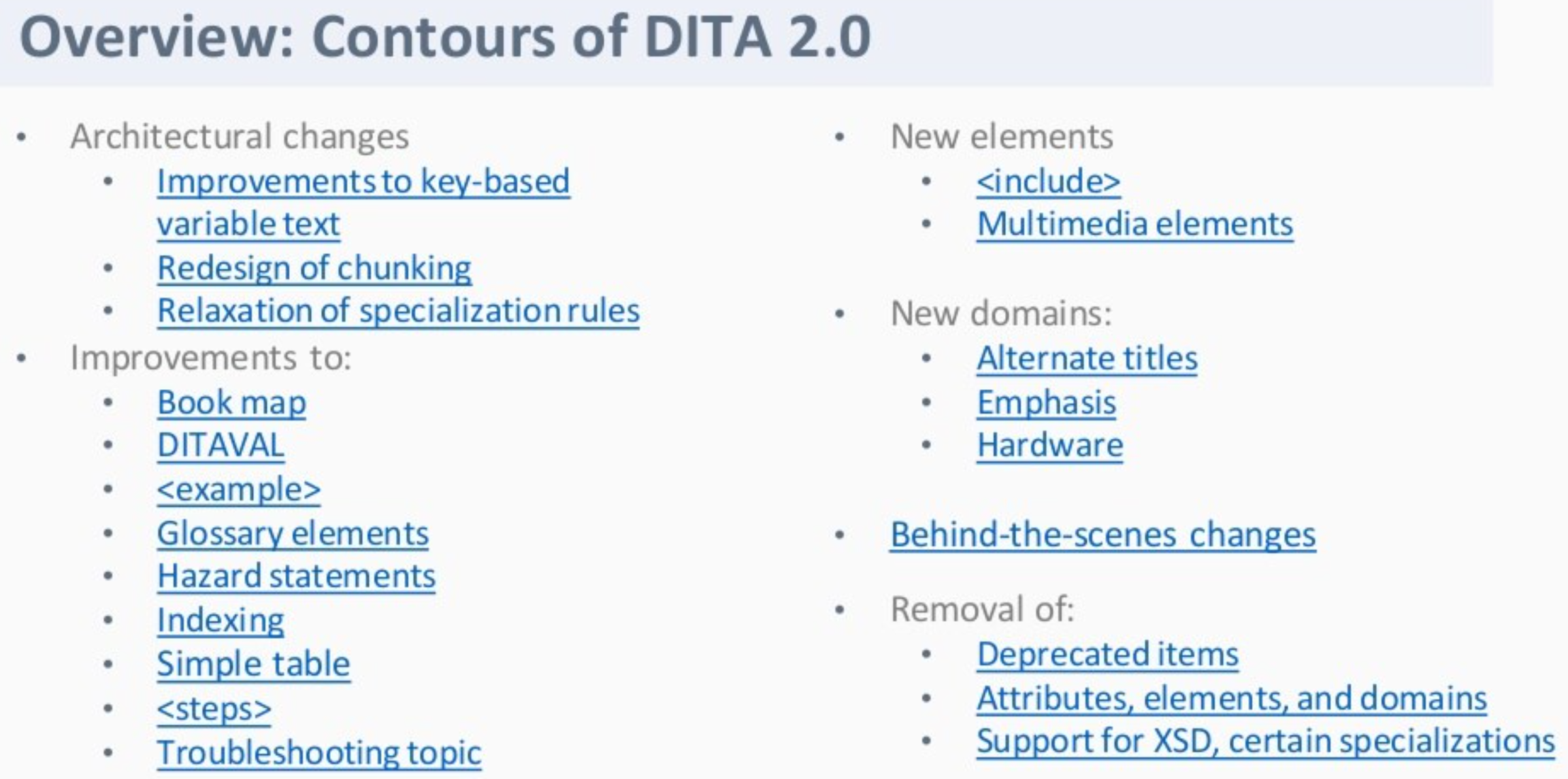Hello everyone:
My apologies for not posting this earlier, but I wanted to pass along the following information which may help people choose what DITA 2.0 subject you might want to write about in terms of creating example code and also as a white paper, either singly or collaboratively.
A good resource which outlines everything is Kris Eberlein's presentation on the topic, available on SlideShare here: https://www.slideshare.net/kriseberlein/dita-20-a-not-backwards-compatible-release-249384017.
It is also available as a YouTube video here: https://www.youtube.com/watch?v=WAw_hbFn1C0&t=5s. I also managed to download a machine-generated text capture of what Kris said in
the presentation, which is attached to this email.
In terms of possible topics to write about, page 13 of the presentation outlines things nicely:

I am hoping we can talk about this at our next meeting later today.
Cheers!